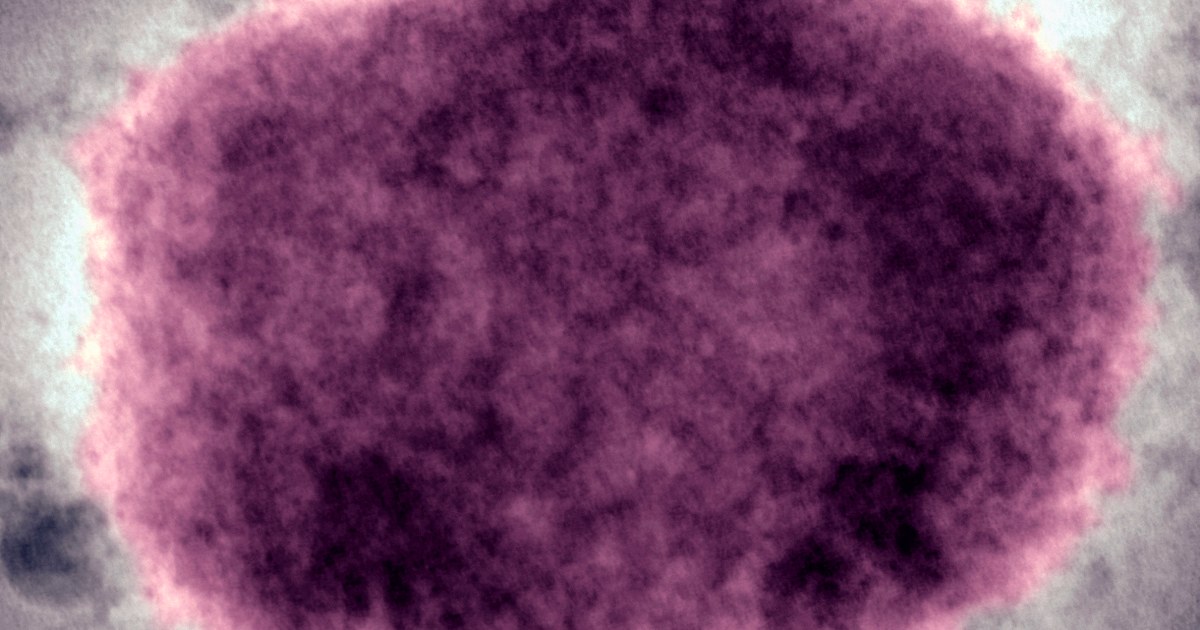
The U.S. has identified its first monkeypox case this year, after a string of new cases popped up in Europe.
The Massachusetts Department of Public Health confirmed Wednesday that a man who recently traveled to Canada was infected with the virus, which rarely appears outside central and western Africa. The patient has been hospitalized and is in good condition, the department said in a statement, and his case does not pose a risk to the public.
Before this, the U.S. had not detected monkeypox since 2021. There were two cases that year: a person in Maryland and one in Texas.
Since the beginning of May, monkeypox has also been identified in the United Kingdom, Spain and Portugal. The U.K. has detected nine cases, most of which are among men who have sex with men. The first of those, reported May 7, was a man who had recently traveled to Nigeria. Portugal, meanwhile, has confirmed five new monkeypox cases and is investigating more than 20 total. All of those patients are men, the country’s health ministry said in a statement. Spain also issued a national alert Wednesday after 23 people in Madrid showed symptoms consistent with monkeypox.
Monkeypox is not easily passed from person to person, but there are several ways it can spread. Transmission occurs mostly through the exchange of large respiratory droplets during prolonged face-to-face contact, according to the Centers for Disease Control and Prevention. The virus can also spread via direct contact with bodily fluids, lesions or items they touch, like clothing or bedding.
Animals such as rodents can also pass the virus to humans through bites or scratches. Preparing meat from wild animals presents another avenue of exposure, the CDC said.
The recent pattern of cases among men who’ve had sex with men has raised questions among public health experts, since monkeypox is not considered a sexually transmitted infection.
“We are particularly urging men who are gay and bisexual to be aware of any unusual rashes or lesions and to contact a sexual health service without delay if they have concerns,” Dr. Susan Hopkins, chief medical adviser of the U.K. Health Security Agency, said in a statement.
How to detect monkeypox
Monkeypox has been infecting people since 1970, and most of the cases have been concentrated in the Democratic Republic of the Congo and Nigeria. The virus belongs to the family of poxviruses, which also includes smallpox. The illness is usually mild, though some cases can be fatal. In Africa, around 1 in 10 people who contract monkeypox die, according to the CDC.
Most people, though, recover after two to four weeks.
The illness begins with flu-like symptoms such as fever, headache, muscle aches and exhaustion. Patients often develop a rash within one to three days of the fever — usually on their face first, then on other parts of the body, including genitalia. The rash progresses to lesions that ultimately fall off.
Because of its symptoms, monkeypox can sometimes get confused with chickenpox, syphilis or herpes. A distinguishing feature of monkeypox, however, is fluid-filled blisters called vesicles on the palms of the hands.
“Many of these global reports of monkeypox cases are occurring within sexual networks,” Inger Damon, a poxvirus expert and director of the CDC’s Division of High-Consequence Pathogens and Pathology, said in a statement. “However, healthcare providers should be alert to any rash that has features typical of monkeypox. We’re asking the public to contact their healthcare provider if they have a new rash and are concerned about monkeypox.”
The Massachusetts health department advised doctors to consider monkeypox as a potential diagnosis if a person meets the following criteria:
- Has an unexplained rash
- Traveled in the last 30 days to a country with recently confirmed or suspected cases of monkeypox
- Was in contact with a person with confirmed or suspected monkeypox
- Is a man who reports sexual contact with other men
Source: | This article originally belongs to Nbcnews.com










